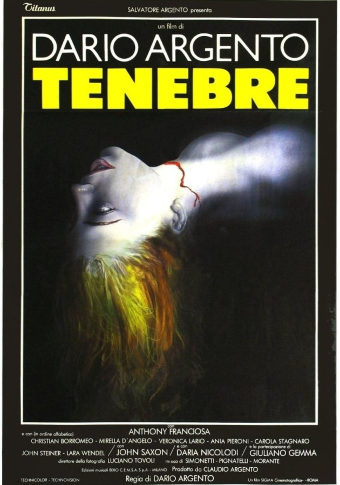The most worthy conclusion possible to the great tradition of the Italian thriller, from the director who invented the genre
This time Dario Argento’s horror strikes in blinding light, with the extraordinary cinematography of Luciano Tovoli
After having successfully experimenting with forays into the supernatural in Suspiria and Inferno, with Tenebre Dario Argento returns to make a thriller littered with corpses, the genre that made his name and which, thanks to his exceptional work, had become immensely popular around the world. On one hand, the film can be considered a perfect summation of all Argento had achieved in the preceding decade. On the other hand, however, Argento certainly wasn’t going to simply pay homage his own work. He rises to the challenge and once more revolutionises the genre: while you expect vivid colours and darkness, instead the horror strikes in blinding light. Many scenes were shot in full daylight, with both the exteriors (mainly shot in the Eur neighbourhood of Rome) and the interiors set inside ultra-modern apartments dominated by white. Cinematographer Luciano Tovoli again proves to be one of the best in the business. Tenebre is the most worthy conclusion possible of an unrepeatable genre.
An American novelist in Rome to present his latest book, finds himself involved in a series of crimes inspired by his novel. The writer begins to investigate, but also ends up being killed by the maniac. Despite the murderer being exposed, the killings continue …
The most worthy conclusion possible to the great tradition of the Italian thriller, from the director who invented the genre
This time Dario Argento’s horror strikes in blinding light, with the extraordinary cinematography of Luciano Tovoli
After having successfully experimenting with forays into the supernatural in Suspiria and Inferno, with Tenebre Dario Argento returns to make a thriller littered with corpses, the genre that made his name and which, thanks to his exceptional work, had become immensely popular around the world. On one hand, the film can be considered a perfect summation of all Argento had achieved in the preceding decade. On the other hand, however, Argento certainly wasn’t going to simply pay homage his own work. He rises to the challenge and once more revolutionises the genre: while you expect vivid colours and darkness, instead the horror strikes in blinding light. Many scenes were shot in full daylight, with both the exteriors (mainly shot in the Eur neighbourhood of Rome) and the interiors set inside ultra-modern apartments dominated by white. Cinematographer Luciano Tovoli again proves to be one of the best in the business. Tenebre is the most worthy conclusion possible of an unrepeatable genre.
An American novelist in Rome to present his latest book, finds himself involved in a series of crimes inspired by his novel. The writer begins to investigate, but also ends up being killed by the maniac. Despite the murderer being exposed, the killings continue …
